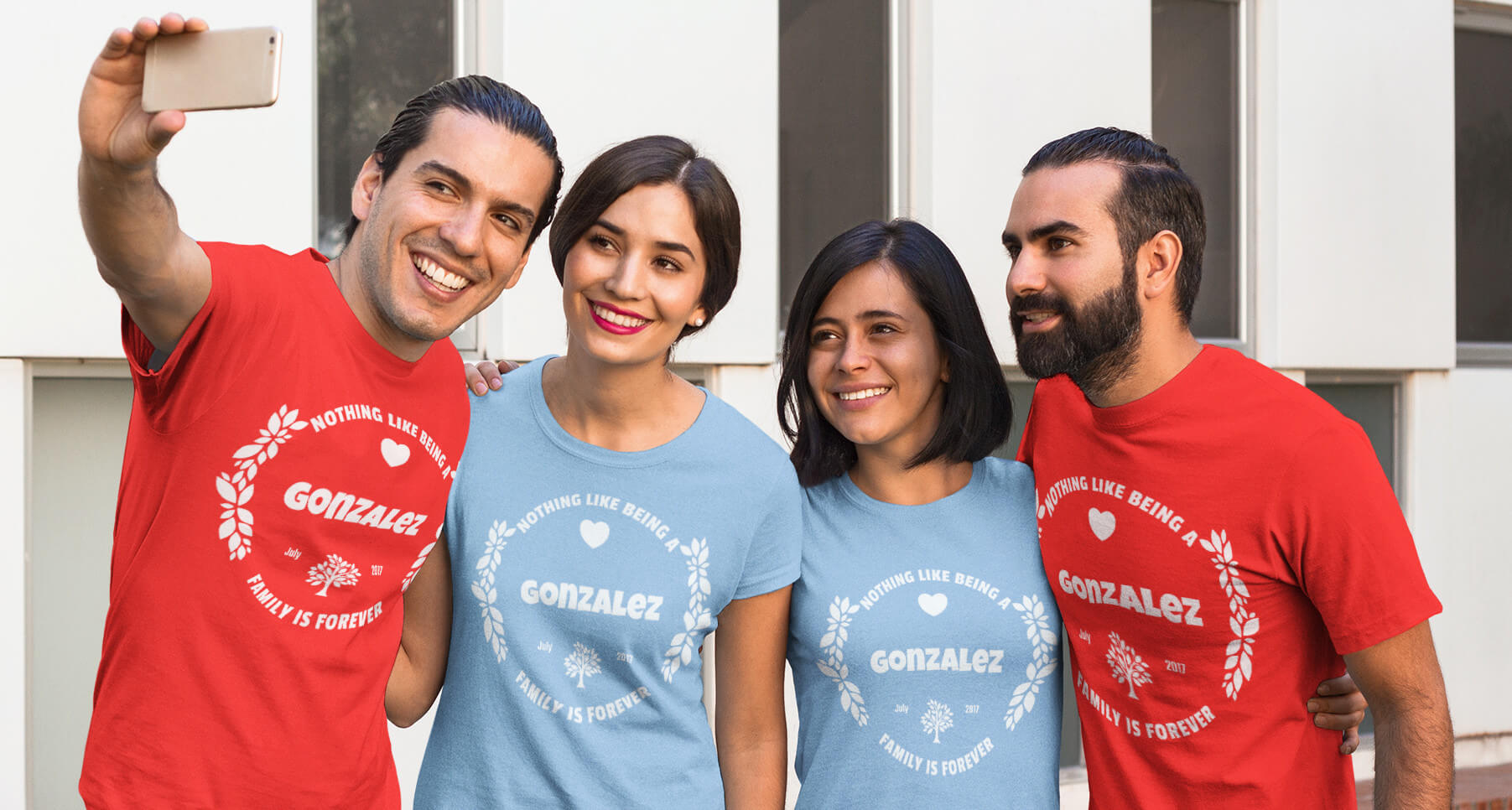Creating custom family reunion shirts at home can be a fun and meaningful way to commemorate the event. It allows you to personalize each shirt with unique designs, colors, and messages that capture the spirit of your gathering. Here’s a step-by-step guide on how to make family reunion shirts at home.
Materials Needed
- Plain T-Shirts:
- Choose high-quality, plain t-shirts in your preferred colors. Make sure to get a variety of sizes to accommodate all family members.
- Design Software:
- Use design software like Adobe Illustrator, Photoshop, or free alternatives like GIMP or Canva to create your custom designs.
- Transfer Paper:
- Purchase iron-on transfer paper suitable for your printer type (inkjet or laser). This paper will be used to transfer your design onto the t-shirts.
- Printer:
- A color printer that can print on transfer paper.
- Iron or Heat Press:
- An iron or a heat press machine to apply the transfer onto the shirts.
- Scissors:
- To cut out your designs from the transfer paper.
Step-by-Step Process
- Design Creation
- Conceptualize Your Design: Think about the theme and message you want to convey. Incorporate family names, reunion dates, or a family crest.
- Use Design Software: Create your design using your chosen software. Ensure the design is high resolution (300 dpi) for the best print quality. Keep in mind the size of the design to fit the shirt appropriately.
- Mirror the Image: If you are using iron-on transfer paper, remember to mirror or flip your design horizontally before printing. This step ensures that the design will appear correctly when transferred onto the shirt.
- Printing the Design
- Print on Transfer Paper: Load the transfer paper into your printer following the manufacturer’s instructions. Print your design onto the transfer paper and allow it to dry completely.
- Cut Out the Design: Carefully cut out your design, leaving a small margin around the edges.
- Preparing the Shirt
- Wash and Dry the Shirts: Pre-wash and dry the t-shirts to remove any sizing or chemicals that might prevent the transfer from adhering properly.
- Iron the Shirt: Lay the shirt on a flat, heat-resistant surface. Iron out any wrinkles to ensure a smooth surface for the transfer.
- Applying the Transfer
- Position the Transfer: Place the transfer paper design-side down onto the shirt in the desired position.
- Iron or Heat Press: If using an iron:
- Set the iron to the highest temperature without steam.
- Press the iron firmly onto the transfer paper, moving it slowly and evenly for the recommended time (usually about 3-5 minutes, depending on the transfer paper instructions).
- Pay special attention to the edges to ensure the entire design adheres properly.
- If using a heat press:
- Follow the heat press manufacturer’s instructions regarding temperature and pressure settings.
- Place the shirt with the transfer paper into the heat press and press for the recommended time.
- Peel Off the Backing: Once the shirt has cooled slightly but is still warm, carefully peel off the transfer paper backing. Start from one corner and peel slowly to ensure the design adheres completely to the shirt.
- Finishing Touches
- Set the Design: After applying the transfer, place a piece of parchment paper or a clean cloth over the design and iron again briefly to set it.
- Allow to Cool: Let the shirt cool completely before wearing or washing.
Care Instructions
- Wash Inside Out: Turn the shirt inside out before washing to protect the design.
- Cold Wash: Use cold water and mild detergent.
- Avoid Dryer: Hang dry the shirts to prolong the life of the design. If you must use a dryer, choose a low heat setting.
Conclusion
Making custom family reunion shirts at home is a creative and enjoyable project that adds a personal touch to your gathering. By following these steps, you can produce professional-looking shirts that everyone will cherish as a memento of your special time together.

